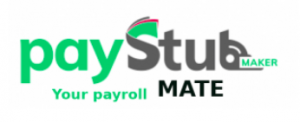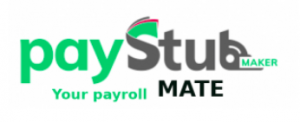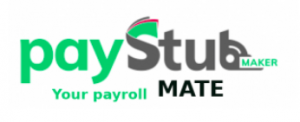Continuing Part I
paystubmakr.com present the second part of the article
 LEARN ABOUT TOP STRATEGIES TO AVOID UNCONSCIOUS BIAS
LEARN ABOUT TOP STRATEGIES TO AVOID UNCONSCIOUS BIAS
We are what we were made through life. Unconscious bias is built into our mind, and its effect is there in our decision making. You can see in a study about it. University of North Carolina Kenan-Flagler Business School:
-
Salaries of blond women are 7% higher than other hair color women
-
Overweight women made less money than thin women
-
Babyface employees had a different career than mature-faced
-
Men and women are more than likely to hire men for higher rank jobs and pay them $4,000 more per year.
-
Typically White names job applications will have 50% more callbacks than “Typically black names.
-
Being a tall guy will help in life 58% of Fortune 500 CEOs’ are close to 6 feet tall while only 14.5% of the population are that size.

We all consciously know that tall people are not different than any other height people and blonds are the same as any heir color women. Blonds are considered stupid but are paid better because of the sexual attraction that has nothing to do with the sex itself.
The results of this unconscious bias are wrong and unfair, but it is based on long time and profound stereotypes in the society. Taking steps to overcome this problem is a challenge for an ethical business owner that cares about biases in the workplace.
There are more reasons to make an effort to overcome the biases that are originated from unconsciousness social stereotypes; it is bad for business. No business leader take the division to hire only blond women or tall men.
It just happened to be the reality with many types of biases; everyone knows that it is wrong, but it keeps being the same. Maybe CEOs are suffering for it more than the short ones? The influence of unconscious bias is a worrying fact.

We do not know how many very well qualified people are losing the opportunity they deserve and how many good people the businesses are loosing and what is the damage to our whole economy. The other side of the case is the damage caused by the unqualified tall, blond or men that did get the jobs.
Trying to understand the magnitude of the damages we have to think about our errors and our total company workforce taking wrong decisions because of unconscious brain work that we do not know about.
After reading the above, we should not be surprised by our bad mistakes. You can lose clients or good prospect employees because of wrong understanding the reality and get your decision. Looking at the cost of unconscious biases, you see the need for training that will reduce your bad decisions.

3. How to Identify Your Unconscious Biases
You can not solve a problem that you do not know, and your overcoming unconscious biases is impossible until you learn to know it. There are tools to use for studying your implicit bias Project Implicit is a nonprofit organization run by academics from universities who are studying implicit bias. On this site, on this site, it is possible
to test your own biases by taking the test in a different range of categories like age, race, gender sexuality and disability. The test works by asking your opinion, and you have to click on the right buttons as fast as you can responding to what popup on the screen. The speed of your clicks show any unconscious biases. For example, when it takes you more time to click when women are associated with positive adjectives than negative ones, it is the proof that you do have an implicit bias regarding women.
The purpose of the fast action is to bypass your conscious and get your automatic, unconscious response to show your biases. That is a compliantly free tool. You can register or be only a guest and enjoy using it. The site doesn’t collect personally identifying information.
You can try many tests as you want, try as many different areas, you will be surprised to find biases you never thought you could have. You can see the result as an information-gathering work. We all have our unconscious biases; there is nothing to be ashamed of. Being open to the results you will discover surprising types of biases.
4. How to Avoid Unconscious Bias
What can you do about unconscious biases? Is there is a way to control them?
Unconscious biases are planted in our minds at a young age and sealed during our adult age. It may require some hard work to master your subconscious biases. According to a review of academic studies in the Stanford Encyclopedia of Philosophy:
“An emerging body of laboratory-based research suggests that strategies are available for regulating implicit biases.”
There are two categories for the strategies to use for winning the battle with own mind:
1. Intervention by changing the bases
1. Intervention by controlling the basis
Change-based interventions are looking for overturning your unconscious biases.
Controlling the bases of the intervention means that you accept your biases and try not to let them win you and affect your behavior.
This section will deal with both types of intervention.
Below are some solutions for your strategies to overcome or control your subconscious prejudice.
1. Increase Your Contact With the Relevant Group
Researchers found that prejudice decreases as people know the social groups. Subconscious biases are the same, and the more your employees will come from mixed population areas the less unconscious biases you will find in them.
It is much easier to have explicit or implicit biases when your biases are directed to an unknown group. Learning by having contact with the group will help you win or erase your biases and write new information on your mind.
2. Blind Yourself
This technique can be very helpful for neutralizing your biases. You can read CV with now name or picture, only school and career will let you know that this person can do the job. A symphonic sequestrate use this blindness to choose new members that play beyond a curtain, so they did not know if it is a man or women, or any ethnic information. They judged only by hearing the music. This way any bias interference is isolated from the decision making.
3. Structure Your Decision-Making
Making a list of criteria will avoid your bias to take over your decision making.
Having the list in hand when you are interviewing applicants or reading their CV will make you concentrate on what you are looking for and not how the candidate are looking.
There is something you need to be careful, and we are expert in justifying our gut-feel decisions by rational-sounding arguments. Build your list with a lot of content so it will be harder to jump on some essential structures.
4. Counter the Stereotypes
Our brain forms associations from all of our life experiences part of it are the subconscious biases. It is possible to train our brain to form new associations.
A good way to change your associations that build your bias against working women. One way to change your mind about women in the workplace is to watch movies featuring successful professional women.
5. Be Conscious
Do not close your eyes and mind to your biases, think about all the aspects of bias in your business. When you are actively thinking about the effects of unconscious biases, you may make better decisions
6. Offer Training
7. Learn More
You can learn more at Microsoft eLesson on unconscious bias and Look Different
I highly recommend watching this TED talk by Vernā Myers
Conclusion
This article reviewed the unconscious biases: What are they, what is their importance, and how to know it and overcome it.
We mentioned the tools that can help you start making better, fairer decisions in your company. You can use this knowledge to make you diversity project a success in the good heart faze as well the benefits aspects. Achieving the goal of free of bias workplace is never-ending work. We hope that you will be improving it every year.
Unconscious bias is something that all of your workforces have deep in their mind.
It is not only you that need training and struggles with it, but all your employees also need to overcome their biases. You will have a much better atmosphere at your business if you invest the time and money in the training of your people.
7. Learn More
You can learn more at Microsoft eLesson on unconscious bias and Look Different
I highly recommend watching this TED talk by Vernā Myers
Conclusion
This article reviewed the unconscious biases: What are they, what is their importance, and how to know it and overcome it.
We mentioned the tools that can help you start making better, fairer decisions in your company. You can use this knowledge to make you diversity project a success in the good heart faze as well the benefits aspects. Achieving the goal of free of bias workplace is never-ending work. We hope that you will be improving it every year.

